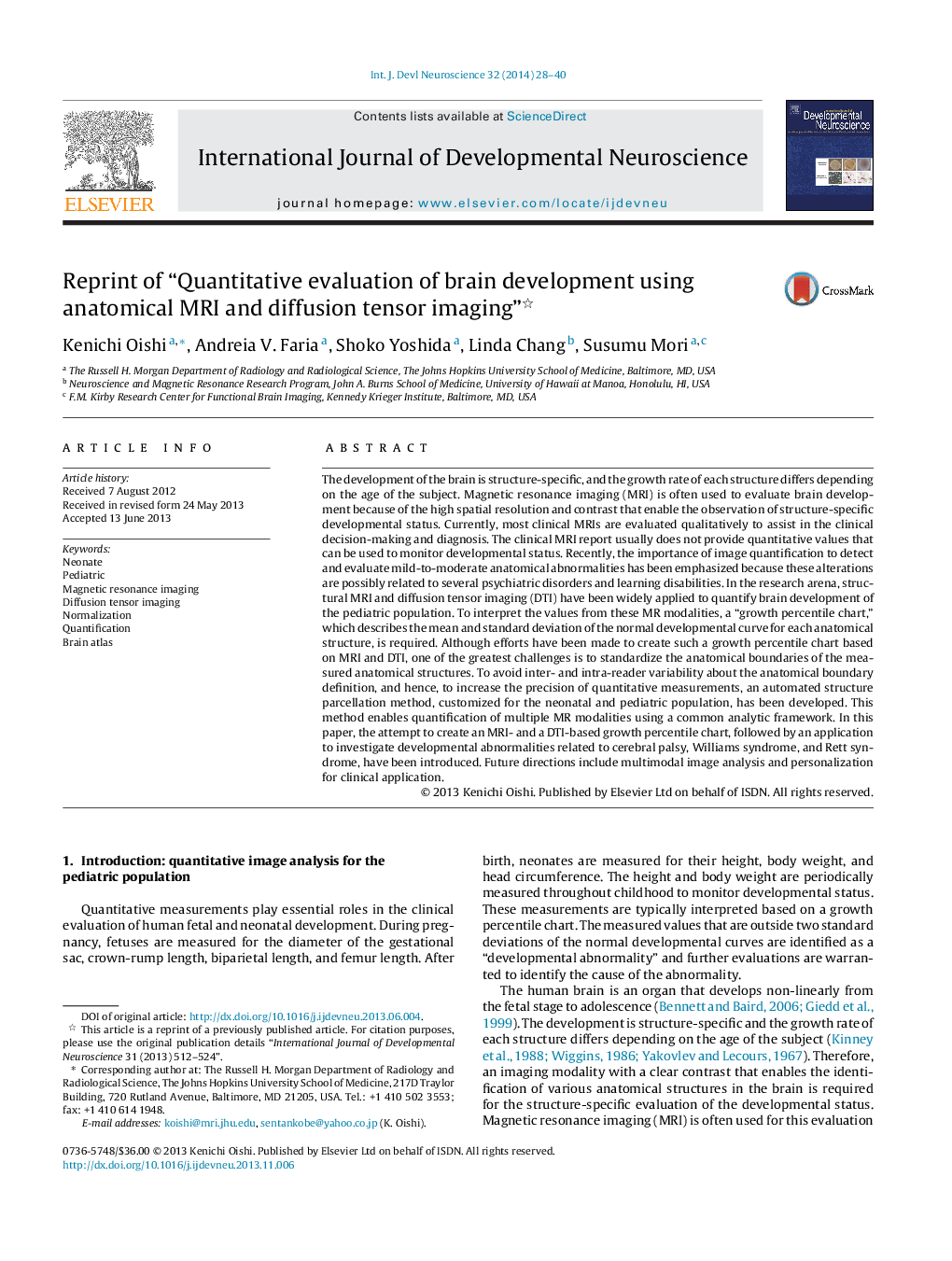| Article ID | Journal | Published Year | Pages | File Type |
|---|---|---|---|---|
| 2785920 | International Journal of Developmental Neuroscience | 2014 | 13 Pages |
•We introduce methods to quantify structural MRI and DTI of the developing brain.•Computer-assisted segmentation of the brain has been applied to pediatric images.•For the interpretation, a growth percentile chart for each structure is necessary.•The attempts to create an MRI- and a DTI-based growth percentile chart are introduced.•Various approaches to investigate developmental abnormalities are demonstrated.
The development of the brain is structure-specific, and the growth rate of each structure differs depending on the age of the subject. Magnetic resonance imaging (MRI) is often used to evaluate brain development because of the high spatial resolution and contrast that enable the observation of structure-specific developmental status. Currently, most clinical MRIs are evaluated qualitatively to assist in the clinical decision-making and diagnosis. The clinical MRI report usually does not provide quantitative values that can be used to monitor developmental status. Recently, the importance of image quantification to detect and evaluate mild-to-moderate anatomical abnormalities has been emphasized because these alterations are possibly related to several psychiatric disorders and learning disabilities. In the research arena, structural MRI and diffusion tensor imaging (DTI) have been widely applied to quantify brain development of the pediatric population. To interpret the values from these MR modalities, a “growth percentile chart,” which describes the mean and standard deviation of the normal developmental curve for each anatomical structure, is required. Although efforts have been made to create such a growth percentile chart based on MRI and DTI, one of the greatest challenges is to standardize the anatomical boundaries of the measured anatomical structures. To avoid inter- and intra-reader variability about the anatomical boundary definition, and hence, to increase the precision of quantitative measurements, an automated structure parcellation method, customized for the neonatal and pediatric population, has been developed. This method enables quantification of multiple MR modalities using a common analytic framework. In this paper, the attempt to create an MRI- and a DTI-based growth percentile chart, followed by an application to investigate developmental abnormalities related to cerebral palsy, Williams syndrome, and Rett syndrome, have been introduced. Future directions include multimodal image analysis and personalization for clinical application.
Graphical abstractFigure optionsDownload full-size imageDownload high-quality image (223 K)Download as PowerPoint slide
